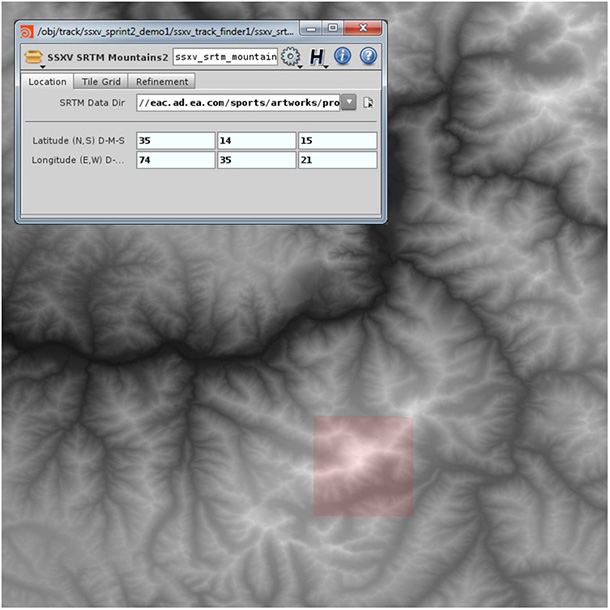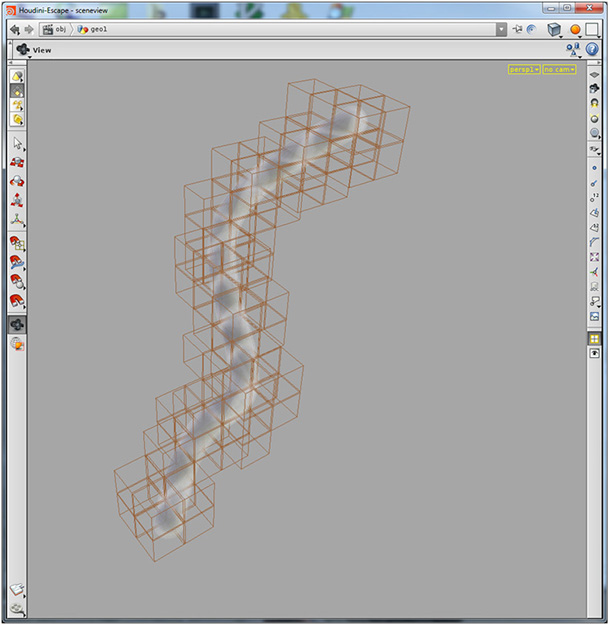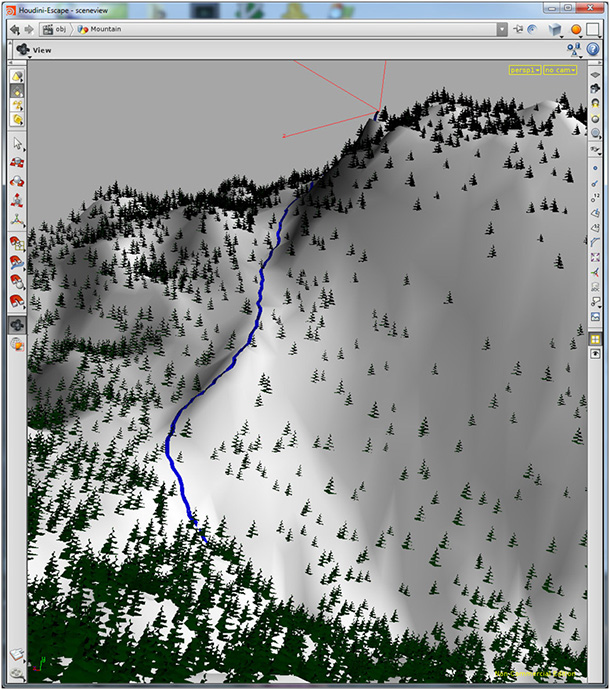The original Super Snowcross (SSX) game had been a huge success and Electronic Arts (EA) realized it was time to reboot this classic. Twelve years ago the game included 10-15 snowboarding tracks but this new version would hit the streets with a whopping 156 tracks from 27 majestic peaks across the globe.
To create all of these highly complex environments, under a very tight time budget, EA turned to Houdini to take this game to a whole new level. With Houdini, they were empowered with the ability to give the game a tremendous boost in playable content without having to embark on a staff recruiting spree.
“If you want to drive innovation, you need to ask for something impossible by current methods," says Todd Batty, SSX’s Creative Director.
A Whole New Mindset For Content Development
“For SSX, we developed not only a new tool set and a new pipeline, but we also implemented a whole new mindset for content development” remarks Caleb Howard, CG Supervisor at EA. “When we started, Houdini’s procedural paradigm was new to most people on SSX so we needed to break from the thinking of previous projects”.
Using Houdini, they built Mountain Man, a pipeline tool designed to plot downhill snowboarding tracks using satellite mapping data. They also used Houdini to construct an Environment Content pipeline that would allow them to populate those tracks with accurately detailed content. The openness of the Houdini Developer’s Kit played a key role in making this pipeline feasible.

Topographic imagery that will be used to map out downhill race tracks
“For SSX, we developed not only a new tool set and a new pipeline, but we also implemented a whole new mindset for content development” remarks Caleb Howard, CG Supervisor at EA. “When we started, Houdini’s procedural paradigm was new to most people on SSX so we needed to break from the thinking of previous projects”.
Using Houdini, they built Mountain Man, a pipeline tool designed to plot downhill snowboarding tracks using satellite mapping data. They also used Houdini to construct an Environment Content pipeline that would allow them to populate those tracks with accurately detailed content. The openness of the Houdini Developer’s Kit played a key role in making this pipeline feasible.
To Caleb, an important aspect of procedural development lies in its flexibility. “Houdini allowed us to do what no other software package or development foundation could - it gave us the ability to design tools and workflows interactively while allowing for full artist involvement and rapid implementation”.
With Houdini, EA’s artists could design, refine and implement their own tools, discarding those that did not work in practice. Once the workflow was proven, the more experienced toolmakers could go in and optimize the tools using the HDK and improve the overall user experience.
The Mountain Man Pipeline
For SSX, EA set out to make use of real-world data as a starting point for building the required tracks. The Mountain Man pipeline allowed them to analyze terrain using digital elevation maps acquired from the NASA Advanced Spaceborne Thermal Emission and Reflection Radiometer (ASTER) project and then procedurally plot a variety of downhill tracks throughout that terrain.

Point Cloud Boolean
Mountain Man tools functioned by first working with 2D meshes lifted into mountains according to the NASA data, eventually building volumetric datasets using various, progressively optimal representations. They went from using 2D Manifolds, to Houdini Volume Primitives, to hierarchical sets of Volume primitives, and lastly to completely non-uniform Point Cloud representations.
Once each track was generated, it could be tested automatically. “We were able to take source code from our back-end ballistics libraries, and use it within a Surface Operation” Caleb explains. “This allowed us to visualize the likely trajectories of players when they hit a ramp at a range of velocities by using the actual code that would define their motion within the game”.

Hierarchical Volumes
Mountain Man gave EA a solution that enabled them to automate track design work that would have otherwise been completed using hand-modeling techniques. This offered the team limitless potential to create all the tracks required in record time.

A detailed model of a real-life mountain that gamers can explore in SSX
The Environment Content Pipeline
Once tracks were designed, the Environment Content Pipeline allowed the team to layout the visual elements required for the appropriate type of terrain. This pipeline was built using principally Houdini and included the generation of the terrain mesh as well as the instance placement of props.
Essentially, the tool is a system used to determine the placement of trees and large rocks based on an analysis of the terrain and the application of predetermined rules.
The analysis took into account existing designer-created controls as well as rules set up to govern the placement of different types of objects. A level designer could specify an area of the terrain that might have a lot of trees, perhaps for an event such as an obstacle avoidance challenge. The tool would then place these trees accordingly while taking into account any rules to determine which types of trees grow in the appropriate conditions.

Rapid Prototyping within the Environment Content Pipeline
The Environment Content tools were designed to take full advantage of Houdini’s strong basis in mathematical expression authoring to measure proximities, slopes and combine this with surface attributes such as painted-on density or tree-growth attributes. As an added benefit, the level designer was not required to understand the tool’s underlying math, leaving them free to create as they wish while the tool made sure they maintained a high degree of terrain accuracy.
After all the preliminary rules and “broad-stroke” controls had been applied to a track, the level designer also had a set of tools for repositioning trees both interactively and individually, making full use of Houdini’s interactive viewport handles. In short order, a level-designer could go through a large area - grabbing trees one at a time, dragging them to new positions, reorienting them, switching the species, scale, or state of health. Though the trees were instantiated by the game engine at run time, the tool would show the asset in Houdini as it will appear in game. On export, only the defining meta-data would be exported in a format that plugged straight into the game engine for immediate play-testing.
A Job Well Done
Having Houdini as a production tool for this project gave EA new ways to create a wealth of content using a combination of automated analysis tools and artist-driven design tools. Starting out with an ambitious plan, the team was able to deliver using the procedural techniques which are at the core of Houdini’s workflow.
With the release of SSX in 2012, EA successfully met the colossal goal they set out to achieve by packing in an unprecedented level of detailed content. The result is a gamer’s dream come true.
COMMENTS
Please log in to leave a comment.